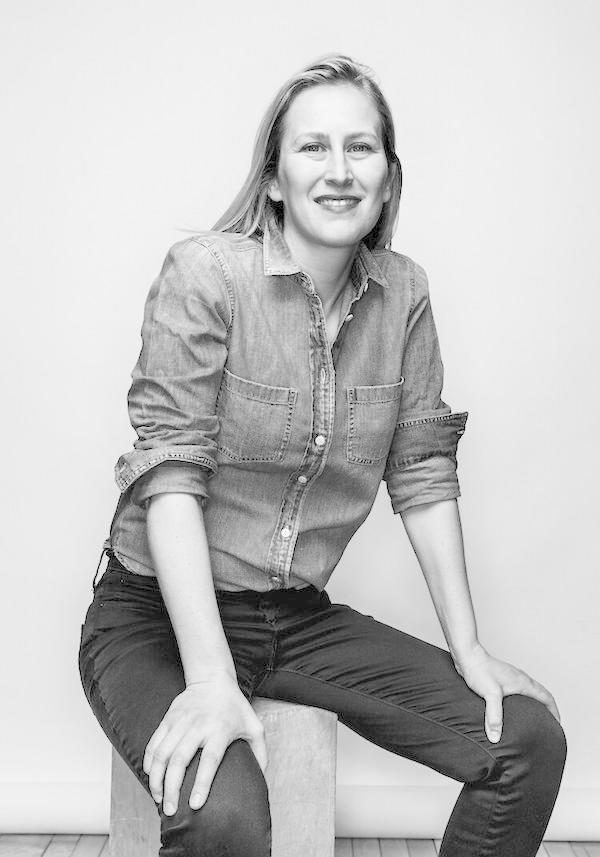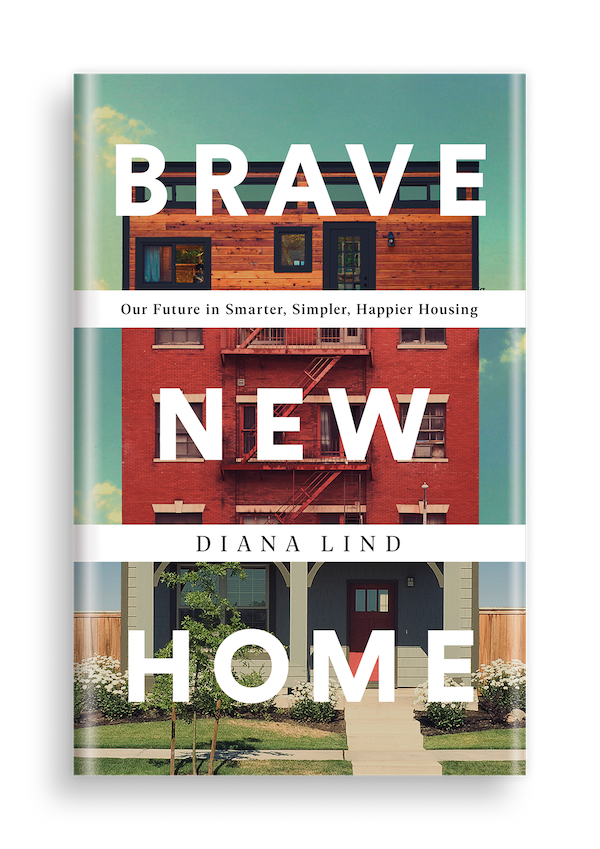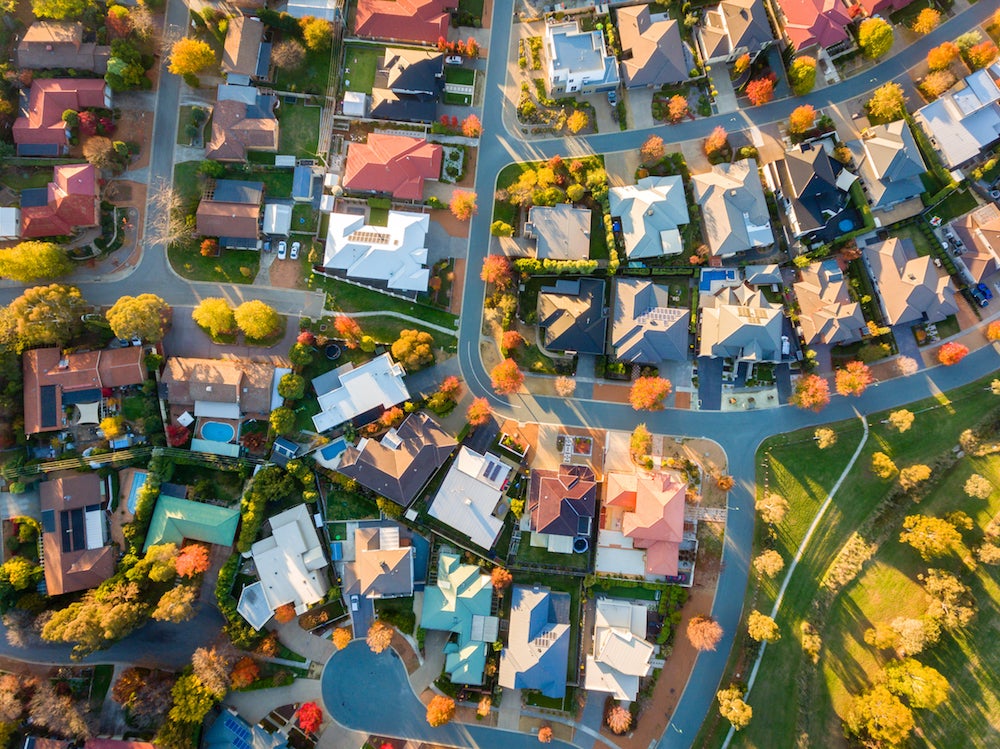Here’s an experiment: Ask any kid to draw a picture of a home. Predictably, you’ll get a sweetly rendered chicken scratch of a classic single-family house. Two stories, a gable roof, maybe a chimney. That’s what a house looks like. That’s what a house is. Duh.
It’s an archetype we carry with us into adulthood. The notion of the single-family house as the proper unit of measurement for the American home is so deeply ingrained in our culture that it seems almost silly to point it out. But, as author and urban policy specialist Diana Lind explores in a new book, Brave New Home: Our Future in Smarter, Simpler, Happier Housing, homes as we know them are a relatively new phenomenon.

Lind charts the development of the single-family house to the early 20th century, when a combination of factors—some sinister (prejudice against immigrants, packed into tenement housing), and some altruistic (homes were seen as a good way for families to build wealth)—led to a mass migration to suburbs dotted with stand-alone houses.
There are plenty of upsides to this phenomenon, and certainly the design industry has benefited from the ubiquity of the American house. However, as Lind makes clear, there are major downsides, ranging from the environmental impact and the exacerbation of inequality to the surprising emotional cost of living in relative isolation from our neighbors.
What’s more, she says, the rise of intriguing experiments like co-living, tiny apartments, and unique senior living cooperatives points to the fact that our housing stock is wildly out of step with our housing needs.
Speaking with Business of Home, Lind explained the origins of our addiction to single-family housing, what happens next, and what it all might mean for interior designers.
One of the most interesting aspects of your book is the revelation that, for most of our history as a country, single-family housing was not the norm.
The idea of living as a nuclear family of four is a very recent phenomenon. It’s really quite unusual, even today, outside of the United States. If you look back at how people lived in the 1700s, 1800s and even early 1900s in the U.S., families would live with their extended relatives. And young men going to the city to build their professional lives would live in inns, taverns and boarding houses.
Boarding houses were professionalized, but there were also a lot of families, particularly in cities, who would [host] boarders for a period of time. It’s very akin to the way we think of Airbnb these days. There were lots of people who had a room to rent in their house as a way to bring in income and have added flexibility in their house—maybe it would house a grandparent or a relative.
Overall, the idea of living with a family of four people was pretty uncommon.
When did Americans start thinking of a single-family house as the default option?
In the late 1800s and early 1900s, there was tremendous crowding in cities—particularly low-income immigrant families living in the most crowded conditions. A simple way to distinguish yourself was to live in a very uncrowded way, far from the city, in a suburb, as a small family unit with your own backyard.
So there were very early classist and racist components to the idea of separating yourself from this overcrowded, multigenerational way [of] living.

Were there people pushing the idea of the single-family home as the ideal?
Starting in 1918, there was the rise of a movement called Own Your Own Home that was supported by Herbert Hoover before he was president. Once he was at the Department of Commerce, and then later as president, he became very involved in this idea of systematizing housing and creating standardized components to build housing—which was great because it made housing much faster and cheaper to build. That helped to spawn the first era of encouraging homeownership and single-family homes.
It seems like the government has done a lot to encourage people to buy these types of homes.
Hoover’s was the first of a wave of interventions. In the Great Depression, economic policy encouraged homeownership through things like the mortgage interest deduction. Then, in the 1940s and ’50s you had things like the G.I. Bill, the expansion of highways, and a number of other [initiatives] to encourage a suburban housing model.
The real impetus was [often] to create a 30-year mortgage that results in a family building equity in a home. It’s a great way to build wealth. The problem is when it’s only accessible to white families with stable jobs, you end up with double-digit disparities in homeownership between white and Black families.
In theory, is it a bad thing for the government to encourage people to own their own homes?
It’s mixed. The question is: You’re incentivizing it at what expense? The mortgage interest tax deduction is the largest tax incentive that we have, and it primarily goes to wealthy families. Recently, Kamala Harris and Cory Booker have proposed renters’ credits that could be created to support people who are renters. But [without that], it becomes a compounding financial advantage [for homeowners].
You also look historically at how housing downturns have wiped out generational wealth: 2008 was a tremendous [loss] of wealth for families, particularly families of color. And regrowing that equity is really difficult. We’ve basically accepted that this is the way families should build wealth, without thinking: What are other ways to help people grow wealth without having a neighborhood-level [effect] that can be problematic?
What are the downsides to ubiquity of single-family homes?
The primary one is that it forces every family and household to fend for themselves. That has problems that are economic, social and environmental. By sharing more resources, we would have communities that are stronger and less isolated, a lower carbon footprint and less of a need for everyone to drive everywhere.
Are there signs that our housing stock is out of step with demand?
Look at senior housing: You have these 55-plus communities and seniors are lining up around the block to get into them. It’s not because the spaces are so different, but it’s a very specific product to how they want to live their lives. It has amenities, community and an easier lifestyle. That’s a great example of how housing geared toward niche demographics can fulfill a need and be financially successful.
In the book you talk about how housing stock doesn’t support multigenerational families.
We’ve seen a huge rise in multigenerational living—the same percentage as 1950. I’m sure after the pandemic, there will be more people living with kin and extended family. I know a lot of people who have moved in with their parents to access day care. But housing design is a huge issue for so many people [in this situation]. It just doesn’t work. There’s no bedroom on the first floor, there’s not enough privacy.
The housing stock that exists is very much geared toward one family unit: It doesn't have two kitchens or a built-in, in-law unit. I imagine that if products like that were readily available, we’d see a tremendous fit, because the demographics are there.
Is ‘density’—having more people live closer together—the unified theory for how to fix America’s housing stock?
I think “options” is the unified theory. In many places in America, the only kind of housing you can build is a single-family home that meets certain requirements about setbacks and minimum square footage. Imagine being able to build a duplex in the same space so that you could have an apartment for a relative—it would be a tremendous advantage.
Right. Local laws contribute a lot to this. It’s not only that people want single-family housing, it’s that developers are incentivized to build that way.
There are a number of builders, like Lennar, that have created a very successful housing type called a “next gen” home, which is about having the Airbnb or in-law suite, so builders are starting to [focus on] this type of housing. The problem is that in many places, the zoning doesn’t allow for that. So it’s a combination of getting the policies in place and getting the builders interested in producing different types of housing. Being able to build more types of housing options is going to encourage people at different price points and stages of their lives to find housing that better suits their needs.
What about the emotional side of all of this? I think many people still see owning a house with a picket fence and a backyard as a component of the American dream.
There is a lot of research showing that younger people are more interested in experiences than things, that they’re not an acquisitive generation. It may be that that’s just what they can afford right now, or it’s how they grew up, in the wake of the 2008 recession—it may not be a long-term preference.
But we’re seeing fewer young people interested in this ownership model. They’re doing Rent the Runway, Airbnb, Lyft and Uber. This old model of owning your home, owning your car, they’ve seen the downsides and are rethinking it.
I’m sure there will always be a large portion of people interested in owning a home if it makes sense financially. The question is: How long will that be the case?
If the housing stock does shift away from single-family homes, won’t that put a lot of interior designers out of business?
I don’t think that’s true. The shift might be from designing specifically residential interiors to instead designing other spaces. For example, the co-living concepts are super high-design, very much in tune with coworking spaces. The design is part of the value proposition.
But I also think that there’s going to be a change in the style of home and how design is applied to it. A lot of people are going to be interested in how to maximize their spaces. I don’t think that’s anything new, but we may end up needing to see tweaks. For example, there’s not very good design around how to live across generations in a single-family home. That’s a design problem that I can see designers being really useful in solving. People are still going to need places to live, it just may not be as much of that single-family home.
Homepage photo: Shutterstock





























